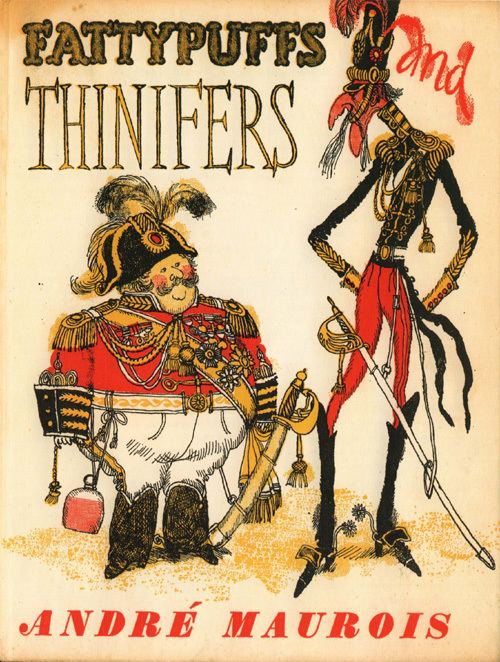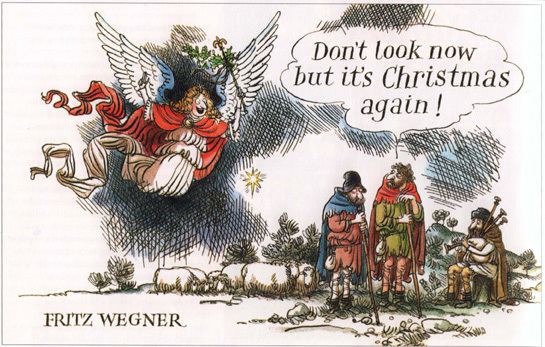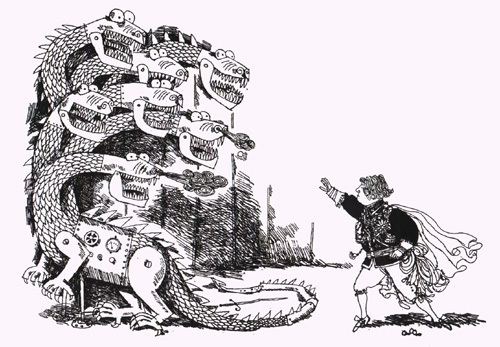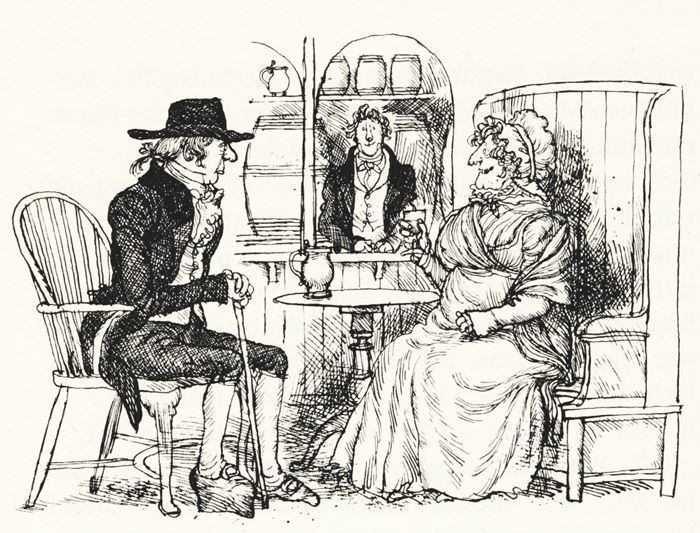Name Fritz Wegner | Died March 15, 2015 | |
 | ||
Books Don't Look Now But It's Christmas Again! | ||
Fritz Wegner (15 September 1924 - 15 March 2015) was an Austrian-born illustrator, resident in the United Kingdom from 1938.
Contents

Early life and exile

Fritz Wegner was born in Vienna on September 15, 1924 into a family of assimilated Jews. Following the Anschluss, a drawing he made of Adolf Hitler to amuse his classmates enraged a Nazi-supporting teacher at his school. As a result he suffered a terrible beating. His parents arranged for the 13-year-old Fritz to leave Austria, alone, in August 1938 for London. They and his sister were later able to join him in exile.
Education

On the strength of a sketch of a man drawn from memory, he was offered a scholarship to St Martin’s School of Art at the age of 14, together with accommodation in Hampstead Garden Suburb with the family of one of his tutors, George Mansell, who also taught him English. Wegner paid his way by helping in Mansell’s studio.

As Wegner recalled in an interview: “It was an extremely generous thing to do and indeed I lived with them for several years, learning everything I later knew about lettering, penmanship, gilding and the Roman alphabet. That was the start of an early passion, after which I moved on to doing illustrations.” He studied at St. Martins School of Art from 1939 to 1942.
Career

In 1942 he was classified as a “friendly enemy alien” and assigned to war work on the land in Buckinghamshire, gaining further education from his co-workers, mostly conscientious objectors. He also managed to obtain an appointment as poster artist for the Buckinghamshire War Agricultural Committee. While living in Buckinghamshire he met the journalist Janet Barber, who was living in a nearby village and they were married two years later. He also submitted cartoons to the Evening Star and later became a lodger in London with the editor of the paper’s diary column. Establishing himself in London after the war he became a freelance graphic artist.

Wegner began his long career as a freelance illustrator by working for the magazine Lilliput and drawing book jackets for a range of publishers. Hamish Hamilton was the first publishing house to launch him as an illustrator. During a long relationship with the company he worked on book covers and jackets for adult and children’s books, and illustrations for a wide range of children’s books. He drew the covers for the English editions of The Catcher in the Rye (1951) and Raymond Chandler’s The Long Goodbye. He illustrated religious works by Dorothy L. Sayers such as The Story of Noah’s Ark (1956), The Story of Adam and Christ (1953) and The Days of Christ’s Coming, (1960) in a slightly medieval style.
Working constantly to support a family of three children, Wegner undertook a range of illustration work for John Bull, Puffin Annual, Radio Times, Farmers Weekly, Everywoman, Woman and Beauty, as well as postage stamps for Christmas and other festivities and, from 1973, a string of drawings for the American children’s magazine, Cricket, which featured running commentary by insect characters.
His work is noted for its historical detail and gentle irreverent humour. One if his most reprinted works is his illustrations for Fattipuffs and Thinnifers: “It gave me the opportunity to test my invention and humour, the two ingredients I most wanted to bring to my drawings”. Speaking of his creative process in an interview in 2001, Wegner told Tom Morgan-Jones:
"My one regret is that my roughs are very often better than the finished artwork. They’re more spontaneous, they have a greater creative sparkle and you don’t have to worry too much about sizes and all the constraints you normally have to work with."
Wegner developed a collaborative partnership with Allan Ahlberg, particularly after the death of Ahlberg’s wife Janet, his co-author and illustrator, in 1994.
Wegner was a visiting lecturer at St Martin’s for 25 years from 1969. (2) He taught a younger generation of British illustrators, among them Sara Midda, Linda Kitson, Patrick Benson, Nick Sharratt, Glynn Boyd Harte, Nicola Bayley, George Hardie, and Phillida Gili.
Wegner was twice shortlisted for the Kurt Maschler Award (for a “work of imagination for children, in which text and illustration are integrated so that each enhances and balances the other”), the first time for his illustrations for Michael Rosen’s Till Owlyglass, and then for his work for Brian Alderson’s The Tale of the Turnip.
Personal life
Wegner married Janet Barber in 1945, with whom he had a daughter and two sons. His wife and children all survived him. He spent his leisure time painting for pleasure and was a collector of books, paintings and engravings, as well as of musical instruments and china.
He died on 15 March 2015.
